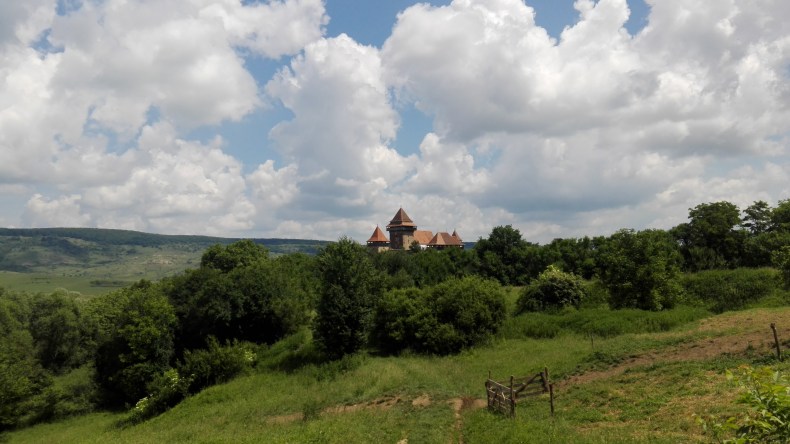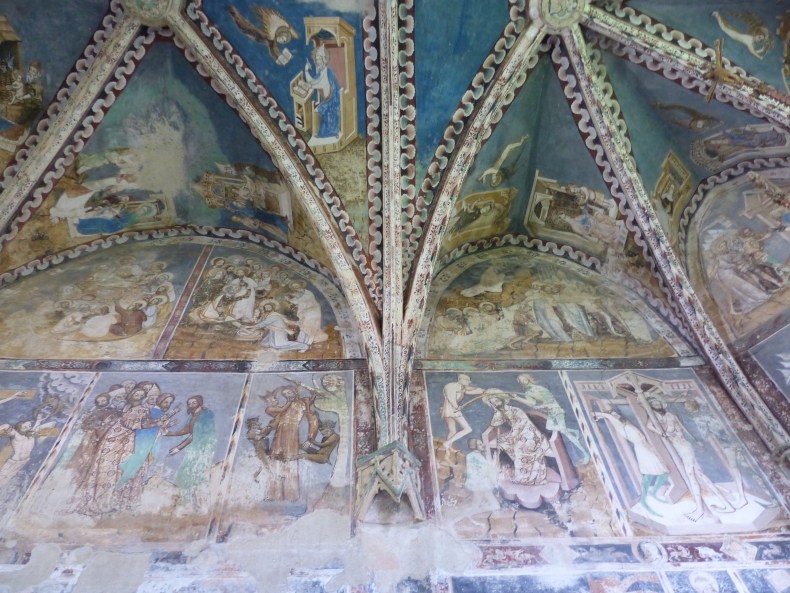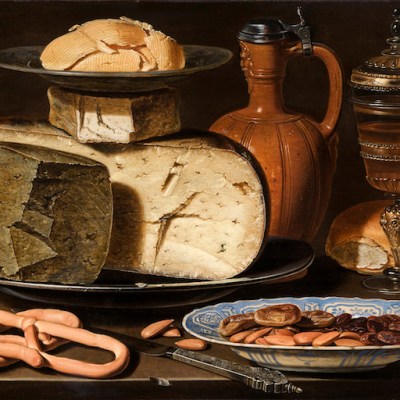In 1999, the opening volume of Miklos Banffy’s Transylvanian Trilogy, published in Hungary between 1934 and 1940, appeared in English for the first time. Although the novels have long been regarded as a classic, the translators faced a dilemma. After ‘much heart-searching’, they explained, they dropped the reference to Transylvania in the title, as they ‘wanted to get away from the overtones of Dracula now inevitably associated for Western readers with any mention of Miklos Banffy’s homeland’.
Transylvania certainly has its fair share of crumbling castles – not least due to the appropriations of landed estates during the communist era, but this summer I set out to explore the villages crowned by fortified churches. Several of these have been listed by UNESCO, a number that is surely due to grow, since Transylvania’s valleys have much to interest botanists and art historians alike. (A fine introduction to the Saxon villages can be found in the Blue Guide’s Travels in Transylvania: The Greater Tarnava Valley, by Lucy Abel-Smith.)
Fortified church in Viscri, Romania, 2017. Photo: © Nicholas Hodge

Driving along the country road to Viscri, home to one of the finest fortified churches, brought home the sense that Transylvania – and indeed Romania – has one foot in the 18th century, and the other in the 21st. In the nearby town of Sighisoara there are bustling restaurants, invariably with wi-fi, while car parks at the foot of the citadel teem with new vehicles. Yet turning off the main road, there are meadows of wildflowers. The horse and cart still has the edge over the tractor, and the roads are sometimes so pot-holed that a sort of slow-motion slalom is necessary to get from A to B.
These distinctive villages – typically painted in pastel hues – were the creation of the German-speaking Transylvanian Saxons, who settled here eight centuries ago. The villages might have vanished forever had Ceausescu got his way. After swathes of Bucharest were erased, a hit-list was drawn up of over 13,000 Romanian villages that were to be replaced by multi-storey agro-industrial complexes. Ceausescu’s regime came to an abrupt end in 1989, yet the villages then faced an altogether different threat. Most of the young Saxons accepted the offer of citizenship from a freshly reunited Germany, following in the footsteps of others who had been ransomed to West Germany by Ceausescu. The villages all but emptied.
Since then, the Mihai Eminescu Trust (MET), which was set up by British-born artist Jessica Douglas-Home, has been striving to protect and revive the villages and their surroundings. Douglas-Home belongs to a small group of UK-based intellectuals who fostered underground universities for dissidents in the Eastern bloc during the 1980s. The MET’s work in Viscri began in 1999, where several hundred projects have now been carried out, complemented by a pioneering sanitation system backed by Prince Charles. To date, MET has been active in 25 villages and four towns, working on the restoration of churches to cattle grids. A number of guesthouses contribute to a sustainable future, with villagers cooking hearty fare for guests.
Today, with the absence of Saxons, the settlements are mainly inhabited by Romanian and Roma families. Active participants in the Trust’s ‘Whole Village Project’, many have set up their own businesses, having been trained in such crafts as iron forging, masonry, joinery and brick and tile-making.
‘The most important thing is for the villagers to feel proud of the heritage,’ says Caroline Fernolend, the MET’s national director and one of only a dozen or so Saxons left in Viscri. Indeed, later that evening, a Romanian couple beam with pride when I point to an ornate tile stove, which, it turns out they have restored, as well as many others in the area.
Frescoes in fortified church in Malancrav, Romania. Photo: © Nicholas Hodge

One of the Trust’s most recent projects is the restoration of the fortified church in the village of Alma Vii, which was boosted by an EEA grant. Although her family has lived in Viscri for generations, Fernolend concedes that Alma Vii outdoes her village in the picturesqueness stakes. Other restorations include the manor house in Malancrav, once owned by the Hungarian Apafi family, which is next to a Lutheran church with magnificent late 14th-century frescoes.
Today, Transylvania – and indeed Romania as a whole – is at a crossroads. ‘The Trust is perhaps most proud of its whole village approach – an alternative to haphazard development,’ Douglas-Home says. ‘The restoration of a single building can leave it out of context, perfected, maybe, but spoiled by its setting. Our work would be a transient achievement unless the villagers themselves came to “own’ the concept.’



